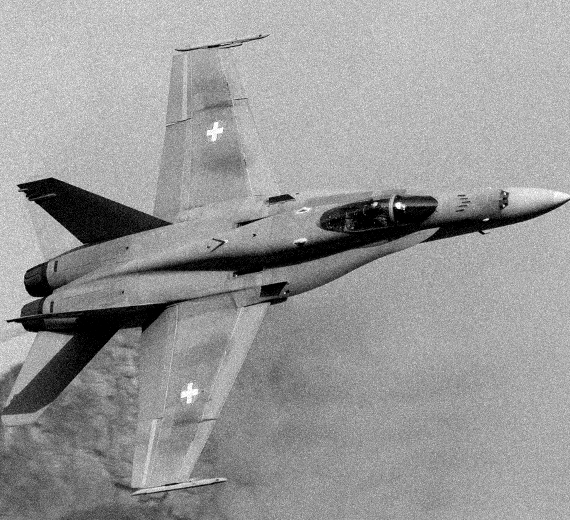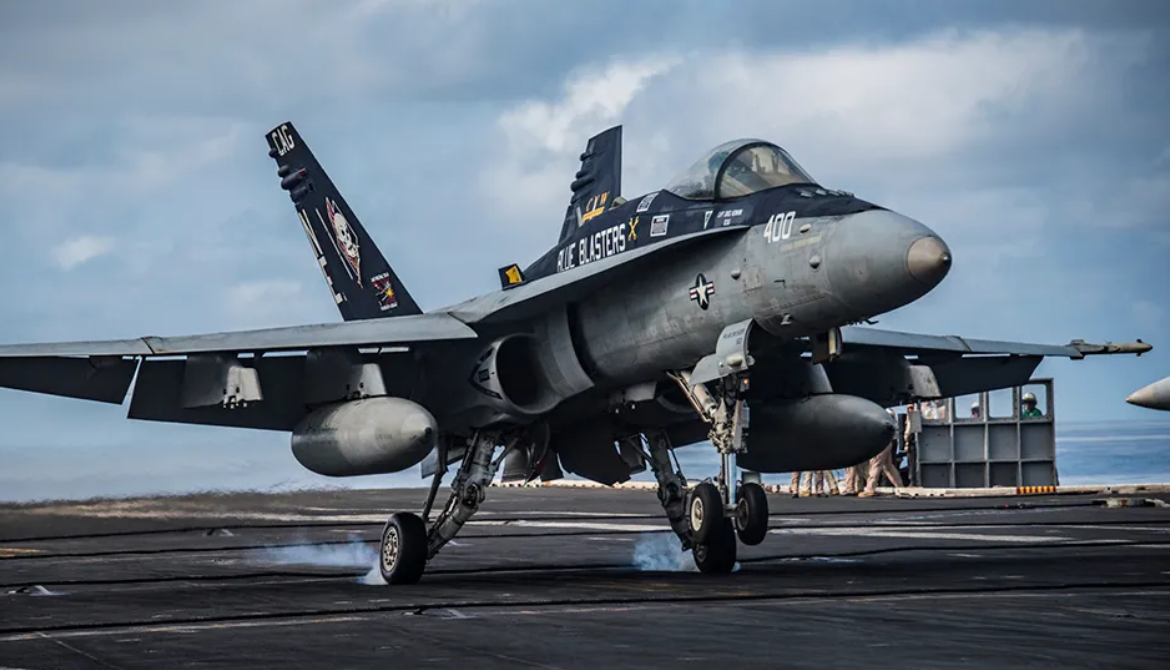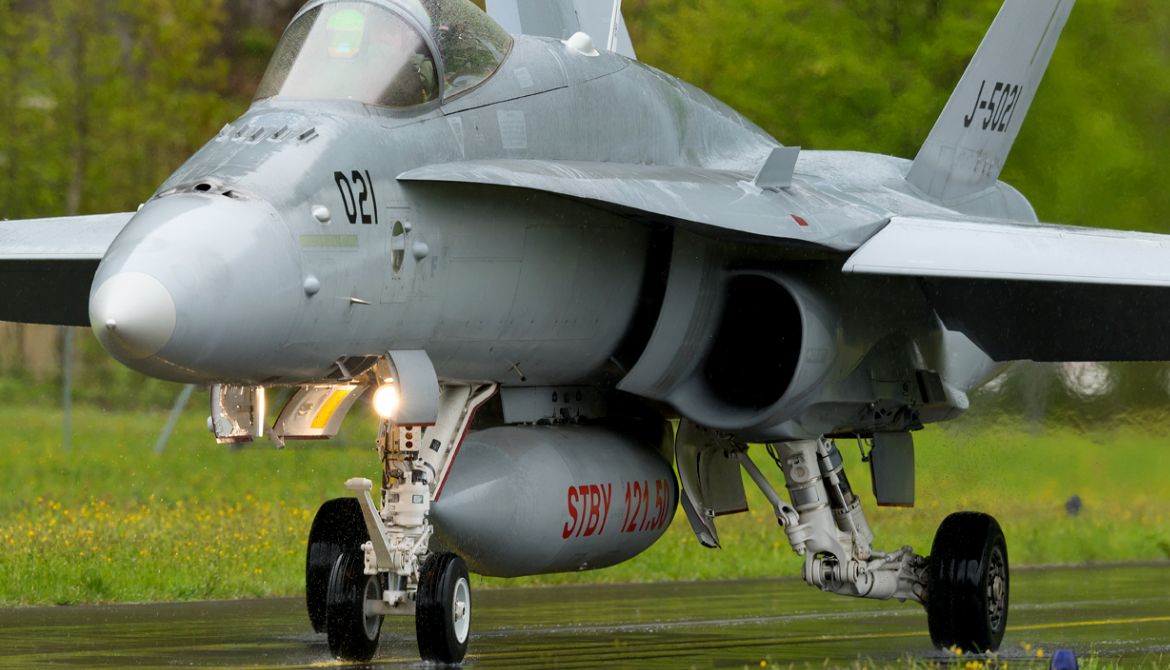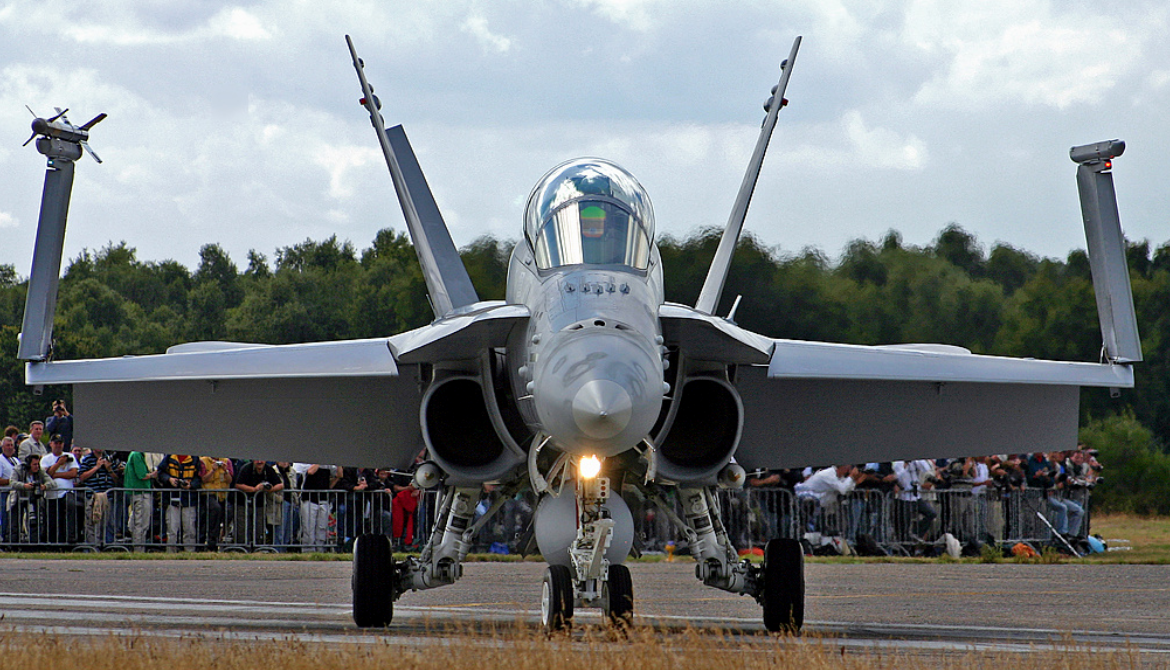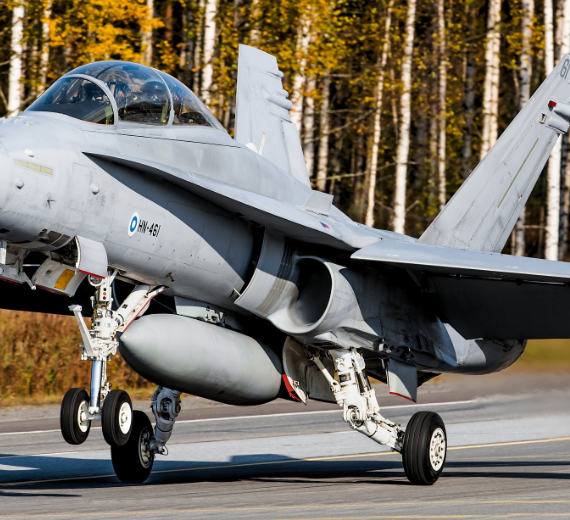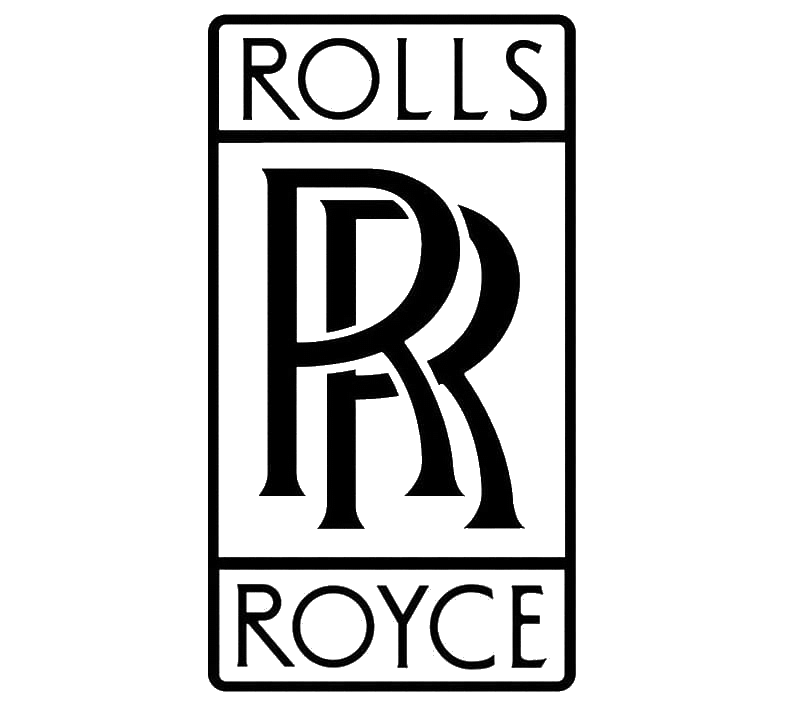McDonnell Douglas
F/A-18C Hornet
Role Multirole fighter
National origin United States
Manufacturer McDonnell Douglas (1974–1997)
with Northrop (1974–1994)
Boeing (1997–2000)
First flight 18 November 1978; 44 years ago
Introduction 7 January 1983 (USMC)
1 July 1984 (USN
Retired 2019 (Hornet, USN)
2021 (RAAF)
Status In service
Primary users United States Navy (historical)
United States Marine Corps
Finnish Air Force
Spanish Air and Space Force
Produced 1974–2000
Number built F/A-18A/B/C/D: 1,480
Developed from Northrop YF-17
Variants McDonnell Douglas CF-18 Hornet
High Alpha Research Vehicle
Developed into Boeing F/A-18E/F
Super Hornet
Boeing X-53 Active Aeroelastic Wing
.
History McDonnell Douglas / Northrop
F/A-18C Hornet

The McDonnell Douglas F/A-18 Hornet is an all-weather supersonic, twin-engine, carrier-capable, multirole combat aircraft, designed as both a fighter and attack aircraft (hence the F/A designation). Designed by McDonnell Douglas and Northrop, the F/A-18 was derived from the latter's YF-17 in the 1970s for use by the United States Navy and Marine Corps. The Hornet is also used by the air forces of several other nations, and formerly by the U.S. Navy's Flight Demonstration Squadron, the Blue Angels.
The F/A-18 is a twin engine, midwing, multimission tactical aircraft. It is highly maneuverable, due to its good thrust-to-weight ratio, digital fly-by-wire control system, and leading-edge extensions, which allow the Hornet to remain controllable at high angles of attack. The trapezoidal wing has a 20-degree sweepback on the leading edge and a straight trailing edge. The wing has full-span, leading-edge flaps and the trailing edge has single-slotted flaps and ailerons over the entire span
The Hornet was among the first aircraft to heavily use multifunction displays, which at the switch of a button allow a pilot to perform either fighter or attack roles or both. This "force multiplier" ability gives the operational commander more flexibility to employ tactical aircraft in a fast-changing battle scenario. It was the first Navy aircraft to incorporate a digital multiplexing avionics bus, enabling easy upgrades.

0
KmCeiling
0
KmCombat RANGE
0
MachAircraft Speed
0
Max Crew
Photo Gallery
McDonnell Douglas
F/A-18C Hornet


McDonnell Douglas aircraft
McDonnell Douglas F/A-18 Hornet
General Info
-
- Crew: 1 (C)/2 (D - pilot and weapon systems officer)
- Length: 56 ft 1 in (17.1 m)
- Wingspan: 40 ft 4 in (12.3 m) with AIM-9 Sidewinders on wingtip LAU-7 launchers
- Width: 27 ft 7 in (8.4 m) wing folded
- Height: 15 ft 5 in (4.7 m)
- Wing area: 410 sq ft (38 m2)
Powerplant
- Empty weight: (10,433 kg)
- Gross weight: (16,769 kg)
- Max takeoff weight: (23,541 kg)
- Fuel capacity: (4,930 kg) internally
- Powerplant: 2 × General Electric F404-GE-402 afterburning turbofan engines, 11,000 lbf (49 kN) thrust each dry, 17,750 lbf (79.0 kN) with afterburner
Performance
- Maximum speed: 1,034 kn (1,190 mph, 1,915 km/h) at 40,000 ft (12,000 m)
- Maximum speed: Mach 1.8
- Cruise speed: (660 mph, 1,060 km/h)
- Range: 1,089 nmi (1,253 mi, 2,017 km)
- Combat range: 400 nmi (460 mi, 740 km) air-air mission
- Ferry range: 1,800 nmi (2,100 mi, 3,300 km)
- Service ceiling: 50,000 ft (15,000 m)
Armament
- Guns: 1× 20 mm (0.787 in) M61A1 Vulcan nose mounted 6-barrel rotary cannon, 578 rounds
- Hardpoints: 9 total: 2 × wingtips missile launch rail, 4 × under-wing, and 3 × under-fuselage with a capacity of 13,700 lb (6,200 kg) external fuel and ordnance, with provisions to carry combinations of: Follow Link
.
Links to Youtube & Others
Ready then, ready now, ahead of ready for what’s to come. Transforming 4th Generation for the next generation with the newest and most advanced F-16. Meet the Block 70/72 Fighting Falcon.
Northrop
F/A 18C/D Hornet
On May 2, 2011, while on patrol near the Nuristan province of Afghanistan, U. S. Air Force Maj. John Caldwell peered out from the bubbled canopy of his F-16 and saw nothing but desert.
Youtube Link
Lockheed Martin delivered the 4,500th F-16 Fighting Falcon in March 2012. Follow this aircraft's amazing legacy.

